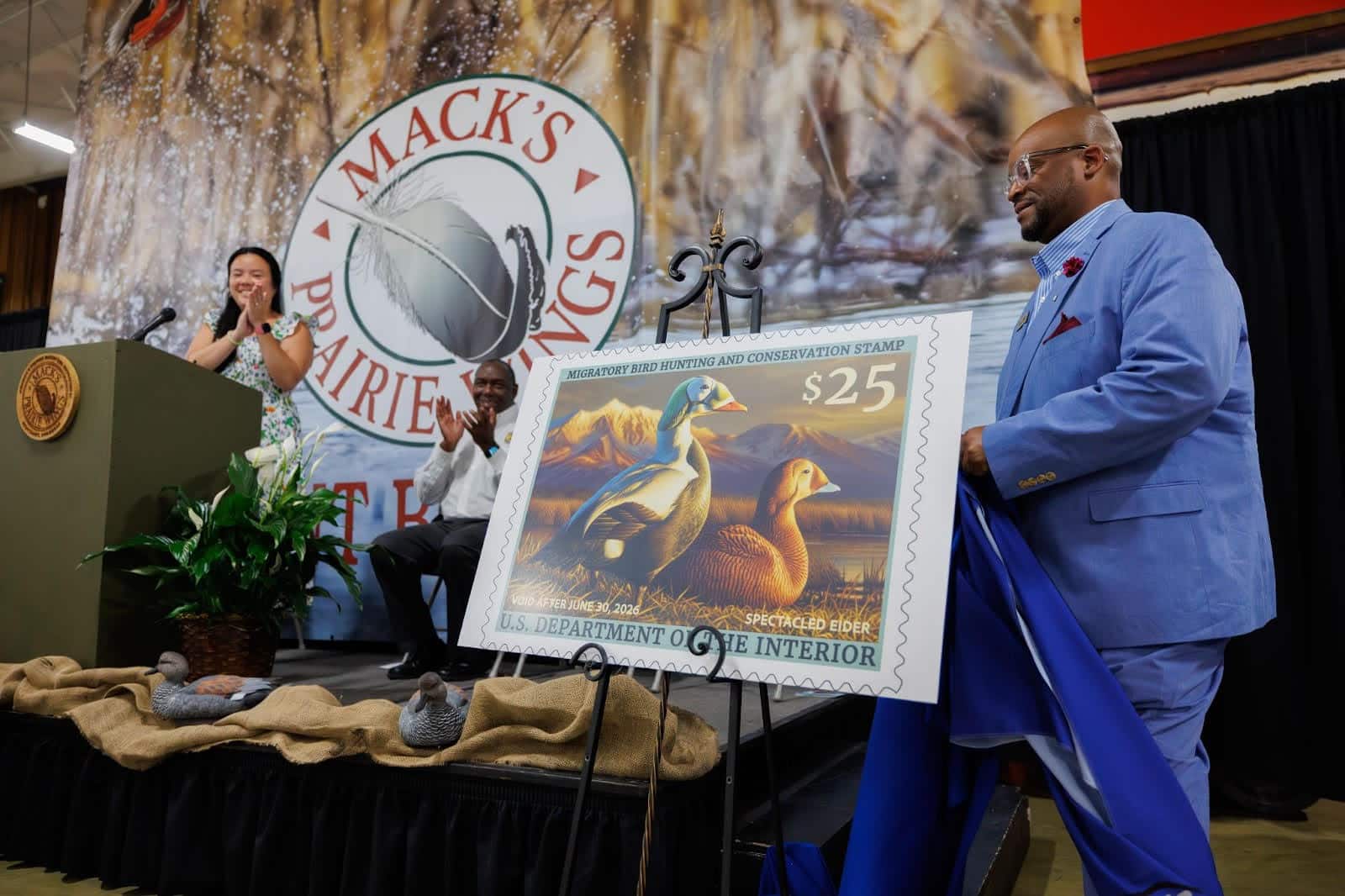Arkansas Wildlife Waterfowl Report
BY Jim Harris
ON 02-02-2022
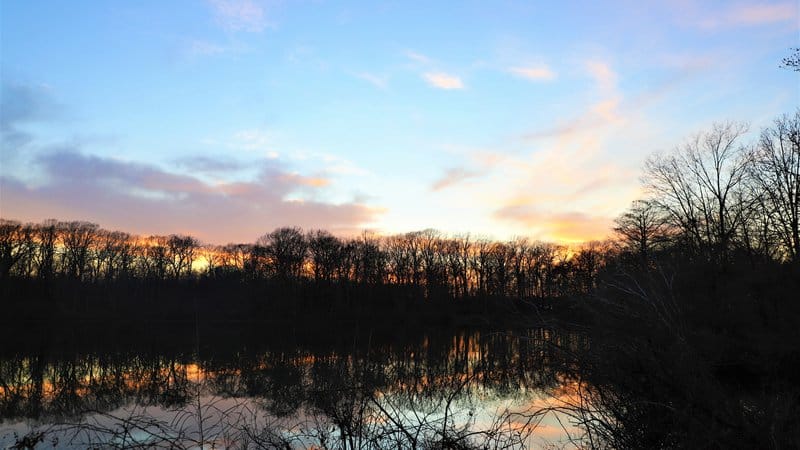
Feb. 2, 2022
Jim Harris
Managing Editor Arkansas Wildlife Magazine
Second Special Hunt for Youths, Veterans and Active Military is Saturday
LITTLE ROCK – Arkansas’s regular waterfowl season ended Monday, but youths, veterans and active military personnel may hunt all day Saturday, Feb. 5, throughout the state in the second of two special hunts for the 2021-22 waterfowl season.
All WMAs are open for all-day duck hunting from 30 minutes before sunrise until sunset. WRICE fields were made available to youth hunters through a draw last week, and those who applied and 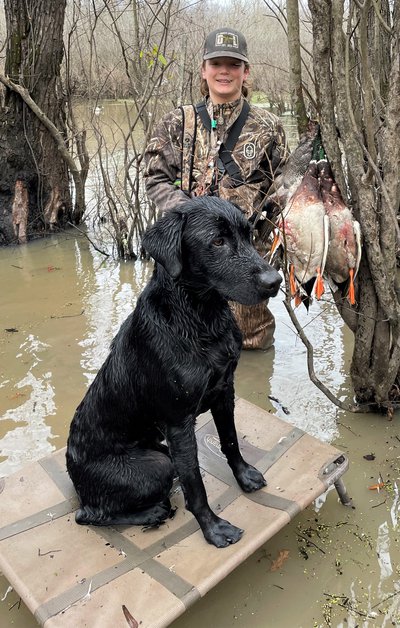
won should have their information on their WRICE field hunt in hand. Wildlife Management Areas that require a permit are open to hunt – Steve N. Wilson Raft Creek Bottoms WMA and the Red Cut Slough of Cypress Bayou WMA, for example – but hunters need to take a permit at the access locations and return the permit, filled out and signed, in the box at that access point following their hunts. Youth blinds at Raft Creek Bottoms or at Sheffield Nelson Dagmar WMA were allocated by draw earlier this week.
Youths must be under 16 to hunt on Feb. 5, but can take an adult mentor who can call the ducks and help retrieve them but cannot shoot. All waterfowl, including greater white-fronted geese (specklebellies) are huntable in the special hunt. All limits and other regulations for regular waterfowl season apply.
Visit https://www.agfc.com/en/hunting/where-hunt for a clickable map of WMAs available in Arkansas.
* * *
Jason Carbaugh, Jason Jackson, Cameron Tatom and Alex Zachary of the Arkansas Game and Fish Commission waterfowl staff conducted the 2022 late-January aerial waterfowl survey in the Mississippi Alluvial Valley (Delta), Arkansas River Valley and southwest Arkansas during Jan. 17-21. Biologists conducting transect-based surveys in the Delta estimated 1,136,186 total ducks, including 534,805 mallards, along with 11,224 ducks in the Arkansas River Valley, 5,269 of which were mallards. Biologists performing cruise surveys in southwest Arkansas reported an estimated 10,078 ducks, with 2,838 mallards among that count. Arctic goose population estimates totaled 1,271,229 light (lesser snow and Ross’s) geese and 277,681 greater white-fronted geese in the Delta.
The Delta mallard population estimate is a bit lower than the 2022 midwinter waterfowl survey conducted two weeks earlier and nearly identical to January mallard population estimates over the last four years. The mallard estimate is about 30 percent lower than the 2010-2022 late-January average. The total duck population estimate is similar to the long-term average of about 1.27 million. Mallards accounted for 47 percent of all ducks in the Delta, slightly below the long-term average of 58 percent.
The Arkansas River Valley estimates for mallard and total duck populations were much lower than the long-term average. Mallard numbers were about half those of the 2022 midwinter survey. About 47 percent of all ducks were mallards, lower than the long-term average of 66 percent. Cruise surveys in southwest Arkansas indicated total duck numbers similar to the 2022 midwinter survey but a decline in mallard numbers.
Nonmallard dabbling ducks showed a slight increase from the first week of January, most likely indicative of American green-winged teal, northern shovelers and northern pintails moving north. Gadwalls were the most abundant ducks other than mallards in both southwest Arkansas and the Arkansas River Valley.
The Lower St. Francis, Cache and Bayou Meto Lower Arkansas survey zones accounted for 76 percent of all Delta mallards. Observers noted few Delta mallards south of the Arkansas River. About 57 percent of Arkansas River Valley mallards (66 percent of total ducks) were observed in the East and West Dardanelle Reservoir survey zones.
Both temperature and rainfall returned to more average conditions during mid-January, a major change from the early portions of the 2021-22 wintering period. Overbank flooding along river corridors expanded in many locations, and water levels in agricultural fields appear to have remained in some portions of the state, particularly the north Delta. An exception is precipitation in the south Delta, which remained below average. These conditions provided some additional habitat and hunting opportunity. These below-average population estimates were somewhat expected as deteriorating habitat conditions on the breeding grounds reduced duck production, likely resulting in a lower fall flight.
This is the final survey of the 2021-22 wintering period.
* * *
The Waterfowl Report editor did his hunting in Arkansas County on Monday, the final day of the season. Greater white-fronted geese (specklebellies) were noted in significant numbers eating heavily in dry fields throughout the county. A good number of lesser geese were also seen, but the number seemed to pale compared with the specks noted on U.S. Highway 165 and Arkansas Highway 276 south of Stuttgart. In fields that remained flooded, shovelers and ringed-neck ducks and a few pintails and mallards were spotted throughout the region on Sunday afternoon but fewer were seen Monday afternoon. However, even more noticeable was how few flooded fields were on the horizon compared to dry fields for late January.
* * *
On Sunday, Feb. 6, Mack’s Prairie Wings will host the 2022 World Championship Snow Goose Conservation Hunt. Mack’s began holding the hunt in 2020. The hunt will be held throughout Arkansas, but the 10-man hunting teams must turn in the geese on-site at Mack’s Prairie Wings in Stuttgart, just south of the intersection of U.S. Highways 63 and 165.
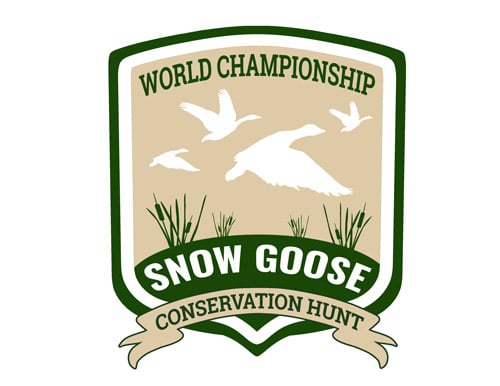
The entry fee per team is $1,250. All geese will be donated to Arkansas Hunters Feeding the Hungry and all proceeds will be donated to Ducks Unlimited, Delta Waterfowl and Arkansas Hunters Feeding the Hungry.
The hunt coincides with the reopening of the Light Goose Conservation Order, which started Feb. 1 and closes for the Saturday Special Hunt Day for youths, veterans and active military personnel. The Conservation Order is back in effect on Sunday and continues through April 25 statewide. During the Conversation Order, there is no limit on light geese (snow, blue and Ross’s geese) and liberal hunting rules are in place, such as electric calls being allowed and no plugs needed in shotguns. Hunters must have a valid Arkansas hunting license and a free snow goose registration permit (available on the website, agfc.com, under “Buy Licenses/Check Game” on the website’s home page). Hunters do not need a Federal Migratory Bird Hunting and Conservation Stamp, an Arkansas Waterfowl Stamp, or HIP registration. The shooting hours are from 30 minutes before sunrise to 30 minutes after sunset.
Light geese aren’t only a nuisance to Arkansas farmers, they have become so abundant that they are destroying their nesting grounds in the Arctic tundra. Not only are the geese eating themselves out of house and home, they are destroying critical habitat for other species that share the tundra. Biologists can conduct eradication efforts to balance the population, but do so only as a last resort. Increased hunting opportunity is the first wildlife management tool biologists turn to because it costs very little to implement and is much more socially accepted than other population-control measures. Arkansas Hunters Feeding the Hungry will process and distribute the geese to those in need. Organizations, businesses and churches of many denominations have joined hunters to transform an abundant light geese population into a renewable food source for the hungry.
The team grand prize package has an estimated total value of $43,685, and includes 10 Stoeger M3500 shotguns and 50 cases of Winchester ammunition, plus prizes from Benelli, Mossy Oak, Sitka and Banded, Yeti and Lucky Duck companies.
For more information and to see the rules and regulations, visit https://www.mackspw.com/snow-goose-conservation-hunt or email register@mackspw.com for more information.
Northeast Arkansas
Big Lake WMA
Map | Water Gauge | Weather Report
When the Ditch 81 extension gauge near Manila (upstream of the Big Lake north-end control structure) reads 17.5 feet, water is beginning to come over the north levee degrade on Big Lake WMA. When the Ditch 81 Extension gauge reads 18.0 feet or higher, the water level on the WMA will rise quickly and hunters should exercise caution while on the area. Be aware of underwater logs in boat runs and hangers in trees.
North Woods GTR
Habitat: Mast production is good.
Water Level: Gauge reading at BoDoc is 237.0; target level is 235.5 feet with 100% flooded.
South Woods GTR
Habitat: Mast production is fair.
Water Level: Gauge reading at 7-Mile is 235.9; target level is 234.5 feet with 100% flooded.
Simmons Field
Habitat: Good production of millet and sedge. Native production is good in the north, middle and south fields.
Water Level: 100% coverage.
Reports of a few ducks moving across the area. 75% of woods were iced as of Feb 2.
Dave Donaldson Black River WMA
Map | Water Gauge | Weather Report
Waterfowl hunters should be aware of hangers and submerged logs within the boat runs and GTRs. Please exercise caution when accessing the area. Please remember to keep boats off the levees so AGFC personnel can access the area. Boats blocking access will be moved. Unattended trailers are not to be left overnight on parking areas. River level Monday, Jan. 24, was 4.47 feet and falling.
Upper Island GTR
Habitat: Mast crop is moderate within the GTRs.
Water Level: Current level is 269.7 feet msl. Target level is 269.5; 100% flooded.
Lower Island GTR
Habitat: Mast crop is moderate within the GTRs.
Water Level: Current level is 268.0 feet msl. Target level is 268.0; 100% flooded.
Upper Reyno GTR
Habitat: Mast crop is moderate within the GTRs.
Water Level: Current level is 266.8 feet msl. Target level is 266.9; 95% flooded.
Lower Reyno GTR
Habitat: Mast crop is moderate within the GTRs.
Water Level: Current level is 266.2 feet msl. Target level is 266.3; 95% flooded.
Winchester GTR
Habitat: Mast crop is moderate within the GTRs.
Water Level: Current level is 263.4 feet msl. Target level is 263.7; 90% flooded.
Earl Buss Bayou DeView WMA
Map | Water Gauge | Weather Report
Boaters should use caution while using the Thompson Tract boat run.
South Oliver GTR
Habitat: Mast production is good.
Water Level: 100% flooded with a gauge reading of 1.5 feet.
Thompson Tract GTR
Habitat: Mast production is good.
Water Level: 0% flooded. The Thompson Tract GTR will be allowed to rise and fall naturally without the gates being operated beginning with this season. This action is an effort to help the next generation of forest.
Lake Hogue WRA
Habitat: Primarily deep open water habitat.
Water Level: Normal pool level.
Shirey Bay Rainey Brake WMA
Map | Water Gauge | Weather Report
Waterfowl hunters should be aware of hangers and submerged logs within the boat runs and GTRs. Please exercise caution when accessing the area. In addition, hunters should allow safe passage when parking vehicles along roadsides. Vehicles blocking access will be moved.
Adam Brake GTR
Habitat: Mast production is good.
Water Level: Water level is 240.1 feet msl with a target level of 240.0 feet msl; 100% flooded.
Rainey Brake GTR
Habitat: Mast production is good.
Water Level: 100% flooded.
Eagle Pond GTR
Habitat: Mast production is good.
Water Level: 100% flooded.
Phase III Moist-Soil Unit
Habitat: Good wetland-type vegetation.
Water Level: 98% flooded.
Charles Crisp Moist-Soil Unit
Habitat: Good wetland-type vegetation.
Water Level: 100% flooded.
Ward Field Moist-Soil Unit
Habitat: Good wetland-type vegetation.
Water Level: 100% flooded.
River Field Moist-Soil Unit
Habitat: Good wetland-type vegetation.
Water Level: 100% flooded.
St. Francis Sunken Lands WMA
Map | Water Gauge | Weather Report
Hunt Area
Habitat: Good mast production within the hunt area.
Water Level: Water levels on St. Francis Sunken Lands for waterfowl season are dependent on flows from the St. Francis River. The target level for providing huntable timber is 212.0 feet msl at the Oak Donnick gauge. As of Jan. 31, the reading was 213.11 feet msl.
Snowden WRA
Habitat: Mixed grasses.
Water Level: 30% flooded, mostly in the low-lying areas due to rain.
Payneway WRA
Habitat: A, B, C and D pools have mixed smartweed and barnyard grasses. Moderate mast is available within pools A, B and C as well.
Water Level: Pool A is at 10% coverage. Pool B is at 20%. Pool C is at 30%. Pool D is at 40%.
East-Central Arkansas
Henry Gray Hurricane Lake WMA
Map | Water Gauge | Weather Report
Hunters should call the Wildlife Hotline at 800-440-1477 for current road closures.
North Unit
Habitat: Good mast crop.
Water Level: The White River at Augusta as of Feb. 2, was 20.44 feet and holding. The water level at Glaise Creek is 189.51 feet msl and falling. All structures on the North GTR will remain open during the 2021-22 season.
South Unit
Habitat: Fair mast crop.
Water Level: The White River at Augusta is 20.44 feet and holding. The water level at Glaise Creek is 189.51 feet msl and falling. All structures on the South Unit are open.
Rex Hancock Black Swamp WMA
Map | Water Gauge | Weather Report
Hunters should call the Wildlife Hotline at 800-440-1477 for current road closures.
Gregory GTR
Habitat: Good mast crop.
Water Level: 35% (Cache River at Cotton Plant was at 15.38 feet on Feb. 2 and falling.)
Wiville Moist-Soil Unit
Habitat: Good stand of millet and native vegetation.
Water Level: 20% coverage.
Sheffield Nelson Dagmar WMA
Map | Water Gauge | Weather Report
The Conway George units are currently available for hunting by applying for online permits. Youths may apply for Saturday and Sunday hunts, with one adult hunter allowed per one youth, up to four hunters in the blind. Please visit www.agfc.com for maps, special regulations, permit application and draw dates. Hunters should call the Wildlife Hotline at 800-440-1477 for current road closures. The AGFC will not be putting boards in at Dagmar. Water coverage is dependent on river level.
Mud Slough GTR
Habitat: Good mast crop.
Water Level: 60% coverage.
Apple Lake WRA (no hunting)
Habitat: Good mast crop.
Water Level: 100%.
Conway George Waterfowl Unit A
Habitat: Good stand of millet and native vegetation.
Water Level: 100%
Conway George Waterfowl Unit B
Habitat: Natural slough area with beneficial native wetland plants.
Water Level: 100%
Conway George Waterfowl Unit C
Habitat: Good stand of millet and native vegetation.
Water Level: 100%
Dark Corner Waterfowl Unit 1
Habitat: Good stand of millet and native vegetation.
Water Level: 100%
Dark Corner Waterfowl Unit 2
Habitat: Good stand of millet and native vegetation.
Water Level: 20%
Dark Corner Waterfowl Unit 3
Habitat: Good stand of millet and native vegetation.
Water Level: 40%
Steve N. Wilson Raft Creek Bottoms WMA
Hunting in Raft Creek Bottoms WMA is open to youth, veterans and active military hunters on Saturday Feb.5, but hunters must pick up a permit at the access points before the hunt and return the signed permit after their hunt. The Youth and Mobility-impaired blinds were assigned by draw.
The White RIver gauge at Georgetown on Wednesday, Feb, 2, was 9.36 feet and falling.
Map | Water Gauge | Weather Report
Unit A
Habitat: Excellent stand of native vegetation.
Water Level: 100% coverage.
Unit B
Habitat: Excellent stand of millet and native vegetation.
Water Level: 100%
Unit C
Habitat: Good stand of native vegetation.
Water Level: 100%
Unit D
Habitat: Good stand of native vegetation.
Water Level: 100%
Unit E
Habitat: Excellent stand of millet and native vegetation.
Water Level: 100%
Unit F (Youth Area)
Habitat: Good stand of millet and native vegetation.
Water Level: 100%
Unit G
Habitat: Fair stand of millet and native vegetation.
Water Level: 100%
Unit H (Mobility-impaired blind)
Habitat: Excellent stand of native vegetation.
Water Level: 100%
Unit I
Habitat: Habitat conditions are poor.
Water Level: 100%
Unit J (Cypert Tract)
Habitat: Excellent stand of native vegetation.
Water Level: 95%
Unit K (Cypert Tract)
Habitat: Excellent stand of native vegetation.
Water Level: 100%
Unit L (Cypert Tract)
Habitat: Fair stand of native vegetation.
Water Level: 100%
Unit M (Magellan Tract)
Habitat: Fair stand of native vegetation.
Water Level: 100%
Central Arkansas
Bell Slough WMA
Map | Weather Report
The Bell Slough GTR is primarily rainfall dependent with the exception of a limited amount of water that the AGFC can back in and catch from Palarm Creek.
Bell Slough GTR
Habitat: Poor mast crop.
Water Level: 100%.
Palarm Creek WRA
Habitat: Fair stand of planted millet.
Water Level: 100%
Craig D. Campbell Lake Conway Reservoir
Map | Weather Report
Habitat and water levels are normal on both Pierce and Dix creeks.
Cypress Bayou WMA
Hunt Area
Habitat:
Good mast crop.
Water Level: 100% coverage.
Red Cut Slough Tract
Unit 1
Habitat:
Habitat conditions are poor.
Water Level: 75%
Unit 2
Habitat:
Excellent stand of millet and native vegatation
Water Level: 75%
Unit 3
Habitat:
Good stand of millet and native vegatation
Water Level: 100%
Unit 4
Habitat: Good stand of millet and native vegetation.
Water Level: 100%
Unit 5
Habitat:
Good stand of native vegetation.
Water Level: 100%
Unit 6
Habitat:
Good stand of native vegetation.
Water Level: 100%
Harris Brake WMA
Upper GTR
Habitat: Below average mast crop.
Water Level: 100%.coverage,
Lower GTR
Habitat: Below average mast crop.
Water Level: 100% coverage. Water is over Steamboat Road.
Holland Bottoms WMA
Hunt Area
Habitat: Good mast crop.
Water Level: 50% coverage.
Lake Pickthorne WRA (no hunting)
Habitat: Excellent crop of native vegetation and millet.
Water Level: East cell is 100%, West cell is 100%.
Northwest Arkansas
Dardanelle WMA
McKennon Bottoms (half-day hunting)
Habitat: Good stand of native vegetation.
Water Level: 100% coverage
Potter’s Pothole Hartman Waterfowl Unit (half-day hunting)
Habitat: West cell has a good stand of Japanese millet. East cell has a poor stand of Japanese millet.
Water Level: 100% coverage
Ed Gordon Point Remove WMA
All waterfowl impoundments remain at or near full pool at this time.
Duck use on the WMA has been moderate and hunter success been poor to fair.
Little Hole (Unit 1)
Habitat: Japanese millet.
Water Level: 100% flooded.
Willow Island (Unit 2)
Habitat: Japanese millet and natural vegetation.
Water Level: 100%
Red Gate (Unit 3)
Habitat: Natural vegetation
Water Level: 100%
Pig Trough (Units 4 and 5)
Habitat: Natural vegetation and Japanese millet.
Water Level: 100%
Cedar Ridge (Unit 6)
Habitat: Natural vegetation.
Water Level: 100%
Unit 7a
Habitat: Natural vegetation.
Water Level: 100%
Unit 7b
Habitat: Japanese millet and natural vegetation.
Water Level: 100%
Duck Trap (Units 8a, 8b and 8c)
8a
Habitat: Natural vegetation.
Water Level: 90%
8b
Habitat: Natural vegetation.
Water Level: 90%
8c
Habitat: Natural vegetation.
Water Level: 90%
Unit 9
Habitat: Japanese millet and natural vegetation.
Water Level: 100%
Controversy Corner (Unit 10)
Habitat: Natural vegetation.
Water Level: 100%
Remmel Marsh
Habitat: Natural vegetation and Japanese millet.
Water Level: 90%
Mud Pond (Unit 12)
Habitat: Natural vegetation and Japanese millet.
Water Level: 100%
Turkey Pond (Units 13a, 13b and 13c)
13a
Habitat: Natural vegetation.
Water Level: 100%
13b
Habitat: Natural vegetation.
Water Level: 90%
13c
Habitat: Natural vegetation.
Water Level: 100%
Teeny Pond (Unit 14)
Habitat: Natural vegetation.
Water Level: 100%
Salt Lick (Unit 15)
Habitat: Natural vegetation.
Water Level: 100%
Bobby’s Pond (Unit 16)
Habitat: Natural vegetation.
Water Level: 100%
Race Track (Unit 17)
Habitat: Natural vegetation.
Water Level: 100%
Frog Bayou WMA
Unit 1
Habitat: Good stand of moist-soil vegetation.
Water Level: 100% coverage
Unit 2
Habitat: Poor stand of moist-soil vegetation.
Water Level: 100% flooded.
Unit 3
Habitat: Good stand of moist-soil vegetation and planted millet.
Water Level: 100%
Unit 4
Habitat: Good stand of moistl-soil vegetation and planted millet
Water Level: 100%
Unit 5
Habitat: Good stand of moist-soil vegetation on the upper end, lower end has been fallow-disked.
Water Level: 100%
Unit 6
Habitat: Good stand of moist-soil vegetation.
Water Level: 80%
Unit 7
Habitat: Good stand of moist-soil vegetation.
Water Level: 100%
Galla Creek WMA
Galla Creek GTR
Habitat: Good stands of native vegetation, including a mixture of barnyard grass, annual smartweeds and sprangletop.
Water Level: 100% flooded. The waterfowl impoundment at Galla Creek WMA is at full pool at this time.
Nimrod Lloyd Millwood WMA
Nimrod GTR
Habitat: The red oak mast crop is poor this year but the desirable native vegetation growth is better than in previous years. This area is rainfall dependent to flood.
Water Level: 50% flooded
Ozark Lake WMA/Dyer Lake Water Unit
Dyer Lake Cells
Units 1 and 2
Habitat: Good stand of moist-soil vegetation and planted millet
Water Level: 100% coverage for both units
Unit 3 South Cell
Habitat: Good stand of moist-soil vegetation and volunteer millet
Water Level: 10% coverage
Unit 4 West Cell (rainfall dependent)
|Habitat: Poor stand of moist-soil vegetation
Dyer West Cell: Less than 25% coverage
Petit Jean River WMA
Map | Water Gauge | Weather Report
Sorehead Moist-Soil Unit
Habitat: Due to ongoing waterfowl habitat enhancement projects, this unit was not able to grow any food this year.
Water Level: 100%
Blacklands Moist-Soil Unit
Habitat: This unit this year contains one of the best stands of desirable native vegetation in recent years. The wooded areas inside the unit produced a poor red oak mast crop this year.
Water Level: 100%.
Slaty Crossing Moist-Soil Unit
Habitat: Due to ongoing waterfowl habitat enhancement projects, this unit was not able to grow a desirable native vegetation crop this year. The area was seeded with millet after the project was completed. The area yielded a great stand of planted millet.
Water Level: 100%
Blacklands Duck Area
Habitat: The wooded sections of this area produced a poor red oak mast crop this year. This area also contains a mix of moderate to great stands of desirable native vegetation mixed throughout.
Water Level: 100%
Pullen Pond Marsh
Habitat: Due to ongoing waterfowl habitat enhancement projects, parts of the central section of this area is bare ground. Most of the area has amazing stands of desirable native vegetation. The desirable native vegetation has started to become more and more prevalent with each year of ongoing management work. This area is rainfall dependent to flood.
Water Level: 75%.
Pond Creek GTR
Habitat: This area produced a poor red oak mast crop this year with good stands of desirable native vegetation in the open lands within this area. The water-control structures were closed on Nov. 16.
Water Level: 10%. Flooding of this area is rainfall dependent.
Slaty GTR
Habitat: This area produced a poor red oak mast crop this year with good stands of desirable native vegetation in the open lands within this area. The water-control structure was closed on Nov. 16.
Water Level: 10%. Flooding of this area is rainfall dependent.
Santa Fe GTR
Habitat: This area produced a lpoor red oak mast crop this year with good stands of desirable native vegetation in the open lands within this area.
Water Level: 100%. Flooding of this area is rainfall dependent.
Southwest Arkansas
Dr. Lester Sitzes III Bois d’Arc WMA
Bois d’Arc Lake WRA
Habitat: Closed to hunting.
Water Level: Normal
Red Slough WRA
Habitat: Closed to hunting.
Water Level: 70% coverage.
GTR
Habitat: Good mast production.
Water Level: 90%
Little Grassy
Habitat: Good
Water Level: 80%
Millwood Lake
Map | Water Gauge | Weather Report
Habitat: Habitat conditions are good.
Water Level: Millwood is at 259.56 feet msl as of Feb. 2.
Ozan WMA
Flooding of all units is rainfall dependent.
Unit 1
Habitat: Good
Water Level: 5%
Unit 2
Habitat: Good
Water Level: 0%
Unit 3
Habitat: Good
Water Level: 0%
Unit 4
Habitat: Good
Water Level: 0%
Unit 5
Habitat: Good
Water Level: 0%
Sulphur River WMA
Mercer Bayou
Habitat: Fair
Water Level: 40%
Henry Moore WRA
Habitat: Closed to hunting.
Water Level: 75%
Southeast Arkansas
Beryl Anthony Lower Ouachita WMA
Map | Weather Report
Water Level: No duck hunting water. Water is available in the oxbow lakes located in the WMA.
Cut-Off Creek WMA
Map | Weather Report
Hunt Area
Habitat: Habitat conditions are good.
Water Level: Some water in low areas only.
Pigeon Creek WRA
Habitat: Habitat conditions are good.
Water Level: Pumping as water conditions allow.
Freddie Black Choctaw Island WMA Deer Research Area
Map | Water Gauge | Weather Report
Habitat conditions are good. Flooding is river dependent. Click on the Water Gauge link above for current Mississippi River levels. Use extreme caution when boating in river.
The Freddie Black Choctaw Island WMA West Unit will allow youth hunting on Saturday, Feb. 5.
George H. Dunklin Jr. Bayou Meto WMA
Map | Water Gauge | Weather Report
The UGSG is reporting real-time water gauge readings at the headwater at each GTR within the George H. Dunklin Bayou Meto WMA. Click the Water Gauge link above for the WMA, and search for the particular GTR as noted.
NOTE: During the 2021-22 wintering period, all intentional flooding will be held at 179 feet msl, an elevation that will relieve stress on many of trees such as red oaks that are showing signs of distressed. Rain and increased flow into the WMA will allow water to rise above that level periodically, but artificial flooding will be stopped at the 179 feet msl mark. A good rule of thumb for comparing water levels to access into Bayou Meto: 176 feet msl – water breaking into sloughs and lower ditches; 177-177.5 feet msl – water beginning to break out of sloughs and lower ditches; 178 feet msl – water in most sloughs and ditches and entering into lower elevations in woods; 178.5 feet msl – most ditches and sloughs deep enough to boat and most boat ramps become serviceable; 179 feet msl or above – good duck hunting waters.
Upper Vallier GTR
Habitat: Good
Water Level: Water at 179.49 feet msl as of Feb. 2. See Gauge Link (Upper Vallier Headwater) for updated info.
Lower Vallier GTR
Habitat: Good
Water Level: Water at 179.64 feet msl as of Feb 2. See Gauge Link (Lower Vallier Headwater) for updated info.
Government Cypress GTR
Habitat: Good
Water Level: Water at 179.80 feet msl as of Feb. 2. See Gauge Link (Government Cypress Headwater) for updated info.
Buckingham Flats GTR
Habitat: Good
Water Level: Full pool. Water level at 177.93 feet as of Feb. 2. See Gauge Link (Buckingham Flats Headwater) for updated info.
Temple Island GTR
Habitat: Good
Water Level: Full pool. Water level at 184.44 feet as of Feb. 2. See Gauge Link (Temple Island Headwater) for updated info.
Canon Brake
Habitat: Good
Water Level: Water at 177.36 feet msl on Feb, 2. See Gauge Link (Canon Brake Headwater) for updated info.
Halowell WRA
Habitat: Excellent
Water Level: Staggered flooding of units.
Wrape Plantation WRA
Habitat: Excellent
Water Level: Staggered flooding of units.
Seven Devils WMA
Hunt Area
Habitat: Habitat conditions are good.
Water Level: Water is running over east side spillway.
Trusten Holder WMA
Map | Water Gauge | Weather Report
Habitat conditions are good. Flooding is river dependent. Click on the Water Gauge link above for current Arkansas River levels.
Recent News
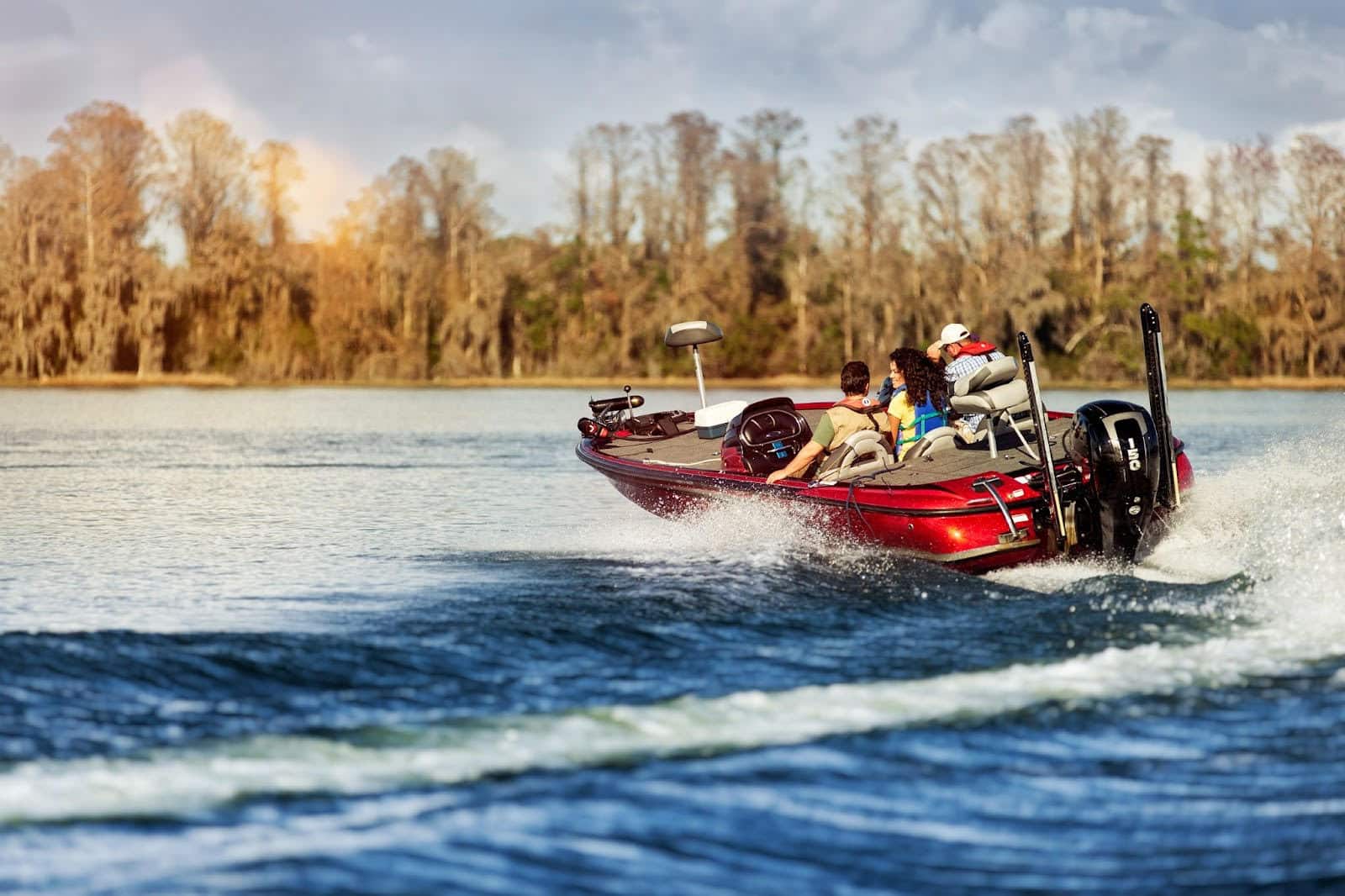
Watch your wake
Jul. 2, 2025
Subscribe to Our Weekly Newsletter E-mails
Don’t miss another issue. Sign up now to receive the AGFC Wildlife Weekly Newsletter in your mailbox every Wednesday afternoon (Waterfowl Reports are published weekly during waterfowl season and periodically outside the season). Fishing Reports arrive on Thursdays. Fill in the following fields and hit submit. Thanks, and welcome!

